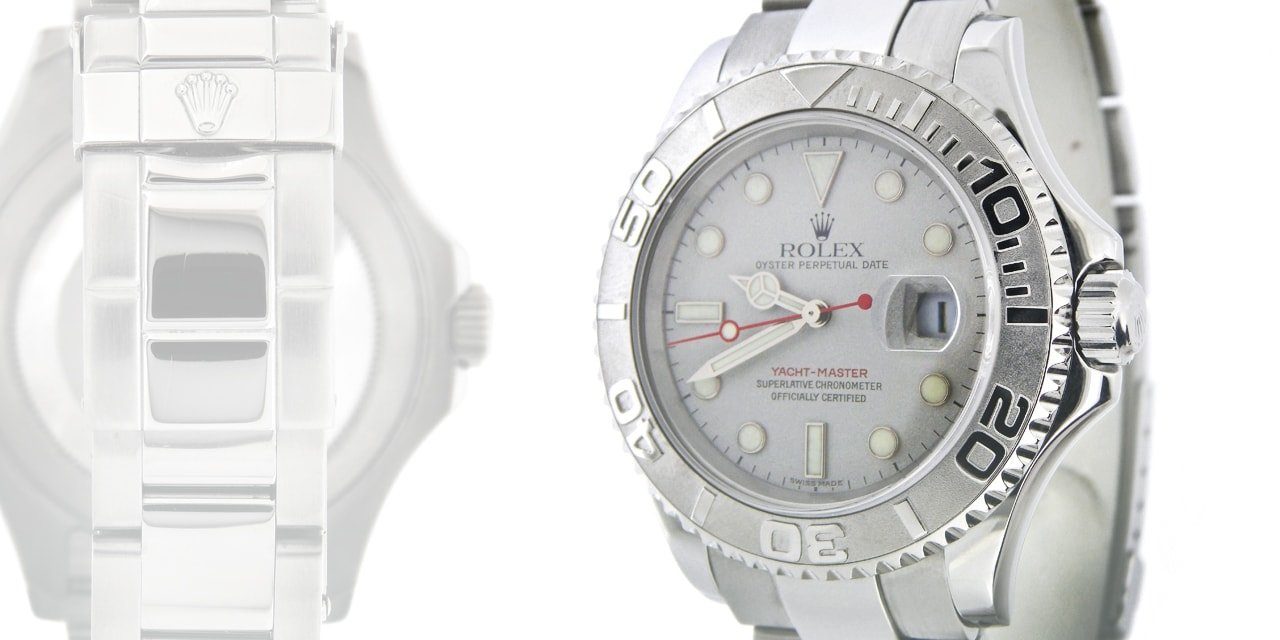Rolex Metals Series: Platinum
Solid gold has been a symbol of wealth, power and success since the dawn of civilization.
Seen as the very height of luxury and attainment, it has featured in jewelry making, along with timekeeping devices, from as long ago as the ancient civilizations of China and Babylonia.
However, there is another element even more revered.
Platinum, taking its name from the Spanish word platina, or ‘little silver’, can also trace its history back thousands of years. But its use in Western cultures as an aesthetic component only began as recently as the 19th century.
What is Platinum?
Belonging to the same family of platinoids as palladium, rhodium, ruthenium, iridium and osmium, platinum is among the densest and heaviest metals in the world. So heavy, in fact, that a six-inch cube would weigh more than 150lbs.
It is also incredibly rare—far more so than silver or even gold. Only a few hundred tons of platinum are mined each year, mostly in South Africa, which accounts for around 80% of the annual production.
However, its extreme scarcity isn’t the only asset that makes it so valuable.
Platinum is one of the least reactive metals, with an incredible corrosion resistance, and so is an ideal material for certain pieces of specialized industrial equipment. Catalytic converters, electrical contacts and electrodes and some specific dentistry apparatus all benefit from platinum’s unique properties.
But of course, it is the visual qualities that have seen it rise to its current status as the most prestigious of metals.
Renowned for its shimmering whiteness, there is a luminosity to platinum that even white gold can’t match. It has an unmistakable glow which, together with its formidable weight, sets any piece or jewelry, and particularly luxury watches, apart.
Rolex Platinum
Rolex has included platinum in its portfolio for many years. You will find pieces on the vintage market from as early as the 1920s and 30s, in all their Art Deco splendor, with platinum cases, usually awash in gemstones of some description.
But it has always been used particularly sparingly. Mainly due to the costs involved, but also because of the difficulty in working the metal.
Although it is exceptionally heavy and dense, platinum is also surprisingly soft and malleable. Coupled with its very high melting point—above 1,700°C—it makes machining and polishing a job for high tech machinery and especially skilled artisans.
Yet, once it is formed, it holds its shape far better than gold (one of the reasons jewelers prefer to use platinum settings for diamonds).
The modern Rolex catalog has a number of models cast in the precious metal, a proprietary alloy created in their own foundry, as are all the other metals the brand uses.
Their compound consists of 95% platinum, generally combined with ruthenium which adds even more strength. This ‘950 platinum’ is reserved for the flagship pieces, including more than two dozen each in the Day-Date and Lady-Datejust ranges, as well as a pair of ice blue-dialed Daytonas.
But the metal is also used elsewhere, and not always in a noticeable way.
Since 1997, there have been what are known as Rolesium models among the brand’s collection. Much like Rolesor (a blend of gold and steel), Rolesium is a term coined by Rolex that describes a bi-metal combination, in this instance a stainless steel case topped with a platinum bezel. The Yacht-Master was the first, and so far only, watch group offered in a Rolesium version, and there are both 37mm and 40mm sizes available. The larger, and more complicated Yacht-Master II has a similar type, but with a white gold case.
The metal is used further back in the production process as well. Rolex’s patented red gold, Everose, contains 2% platinum in the alloy to preserve its hue. And on some of the company’s Cerachrom bezels, platinum is used to coat the engraved numerals via PVD (Physical Vapor Deposition) to give them their individual color.
Rolex’s Platinum Watches
Rare and crushingly expensive, Rolex’s platinum watches are the elite, even for a company that thrives on its exclusivity.
Below, we have listed the models cast in this most select of all metals, along with their dates of manufacture.
The Cellini
| Ref. | Year |
|---|---|
| 5240 | 2001-2017 |
| 5241/6 | 2001-2017 |
The Day-Date
| Ref. | Year |
|---|---|
| 6510 | 1956-1959 |
| 6511 | 1956-1959 |
| 6612 | 1956-1959 |
| 1802 | 1959-1977 |
| 1803 | 1959-1977 |
| 1804 | 1959-1977 |
| 1806 | 1956-1959 |
| 1807 | 1956-1959 |
| 1820 | 1959-1977 |
| 1831 | 1959-1977 |
| 18026 | 1977-1988 |
| 18046 | 1977-1988 |
| 18206 | 1988-2000 |
| 18296 | 1988-2000 |
| 18346 | 1988-2000 |
| 18366 | 1988-2000 |
| 18386 | 1988-2000 |
| 18946 | 1988-2000 |
| 18956 | 1988-2000 |
| 118206 | 2000-2007 |
| 118296 | 2000-2007 |
| 118346 | 2000-2007 |
| 118366 | 2000-2007 |
The Day-Date II
| Ref. | Year |
|---|---|
| 218206 | 2008-2015 |
The Day-Date 40
| Ref. | Year |
|---|---|
| 228206 | 2015-Current |
| 228396 | 2015-Current |
The Daytona
| Ref. | Year |
|---|---|
| 116506 | 2013-Current |
— Featured Photo Credit: BeckerTime’s Archive.






